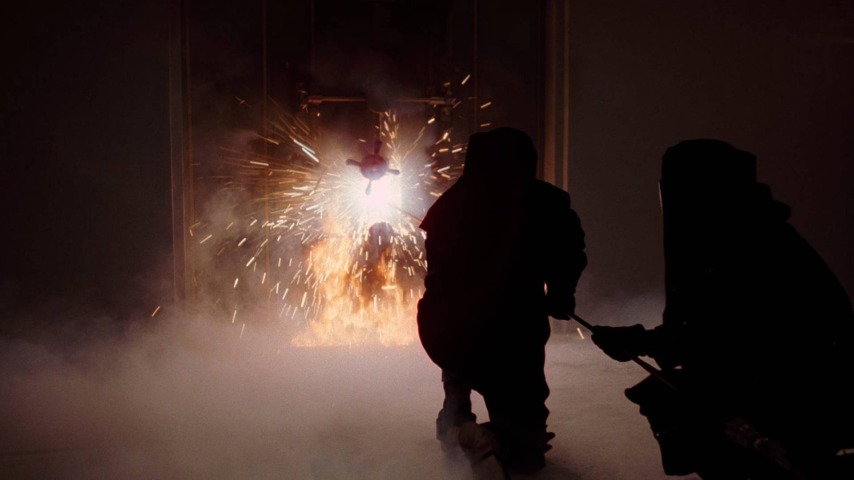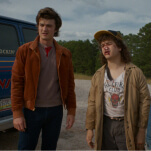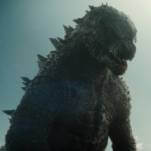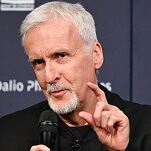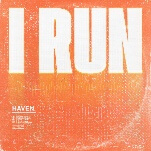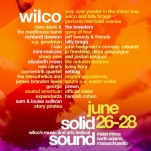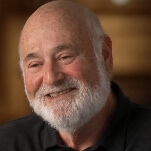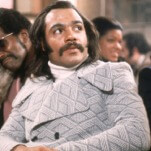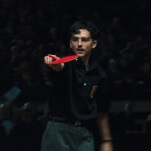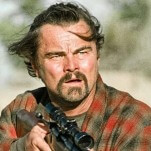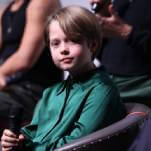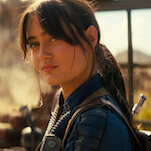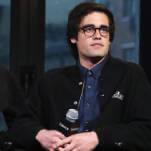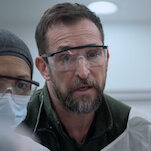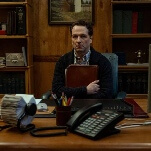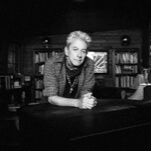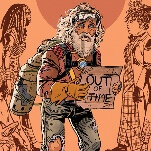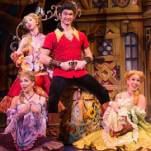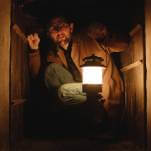But Mann eventually hit up Tangerine Dream, which consisted at the time of founding guitarist-keyboardist Edgar Froese and keyboardists Chris Franke and Johannes Schmoelling. A fan of their 1979 album Force Majeure, Mann thought they’d be perfect to provide badass music for his badass protagonist (“Igneous,” one of their pieces in the movie, is a remix of their 14-minute Majeure track “Thru Metamorphic Rocks”). “Their music reflected the raw, cutting edge of Frank’s character,” Mann told the Boston Globe in 1981. “It does to the sound what Frank’s face does for the video. It’s chaotic, but it also strives for coherence.”
In an interview on the Criterion release, Schmoelling remembers Mann saying he needed experimental musicians who could create the organized noise he was looking for. Mann even showed up at their Berlin studio, mixing and fading on the sound boards with them. “He always made clear, ‘I’d like to work with your group, because you have electronic equipment, you’re not classically oriented, you don’t work with an orchestra,” Schmoelling said. “I want the otherness of sound… I want to make him come across even harder than he already does.”
The synthesizers get to work during the film’s bravura opening sequence, where we first see Frank in the middle of a job. Titled “Diamond Diary,” the piece has the Dream serving up a squirrelly, rising tone, matching the damp, early-morning night moves Mann presents in the opening minutes. (Mann beat Ridley Scott’s Blade Runner by a year in giving us a rain-soaked neo-noir with moody synth music, something also mentioned by Nick James’ essay, which accompanies the Criterion release.) The score reaches a choppy, feverish tempo when Frank starts drilling on the vault. Froese’s guitar kicks in when Frank and his right-hand man Barry (a young Jim Belushi) complete the job and make a speedy getaway back to their stashed cars.
Mann makes it known that the music is mainly there for Frank. Whirring music cues often appear when Frank gets down to brass tacks, whether it’s pulling a gun on a guy who’s stolen his money or trying to convince Jessie (Tuesday Weld), an easy-on-the-eyes waitress, that they should get married and start a family. In order to do that, he must do One More Job, taking on an impossible robbery in L.A., orchestrated by an obviously shady crime boss (Robert Prosky, very Faustian).
The Dream assembles some antsy cues for scenes where Frank rides through the Windy City streets in his Caddy, cracking on getting the right tools while dodging the crooked cops who’ve been keeping tabs on him and his new partner. You could say this is where Mann started his knack for merging slick driving scenes with slicker music cues, as he famously did when he had Crockett and Tubbs speed through Miami to Phil Collins’ “In The Air Tonight” in the Miami Vice pilot.
Once again, the job goes off without a hitch, which leads to Thief’s sunniest (and sunniest-sounding) moment, where a shirtless Frank is walking on the beach with Jessie and their new baby, while Barry and his girl are playing in the water. This sequence has Tangerine Dream sounding particularly like Giorgio Moroder with “Beach Scene,” with Froese once again coming in on the guitar. (On the soundtrack album, there are two versions of this piece.)
While this seems like a happy note to end the movie on, we have another half-hour of Frank predictably finding out that it’s not so easy getting out of the heist game. This leads to a climactic shootout where Frank goes on a rabid, self-destructive tear, and Mann was looking for a Pink Floyd-esque, “Comfortably Numb”-sounding finale to accompany it. When the Dream couldn’t come up with one, he hit up composer Craig Safan (The Legend Of Billie Jean), who composed “Confrontation,” performed by him and session musicians. Mann definitely gets his spaghetti Western on with this ending, giving us the kind of bullet-riddled, burn-the-whole-place down climax those horse operas dropped, usually to the sounds of a defiant Sergio Leone score.
Thief, only Tangerine Dream’s second soundtrack, would kick off a fruitful decade for the group. Mann would work with them one more time, for his 1983 horror film The Keep. After that, they would score several other movies before getting back to their regular groove as prog-rock provocateurs. But over those ten years, when filmmakers were beginning to realize that foreboding, atmospheric synth tracks made perfect B-movie music, Tangerine Dream was the most prolific at giving movies, as Mann would say, the otherness of sound.
